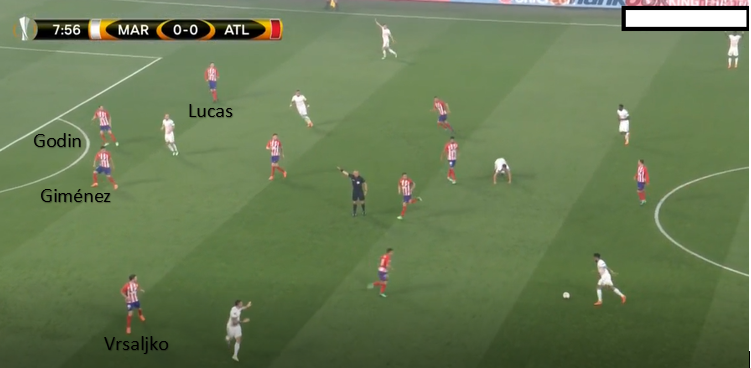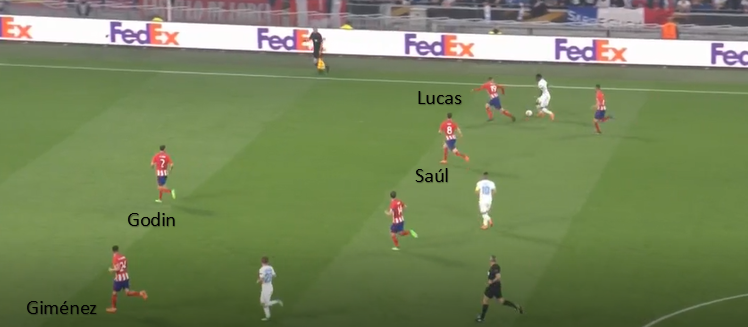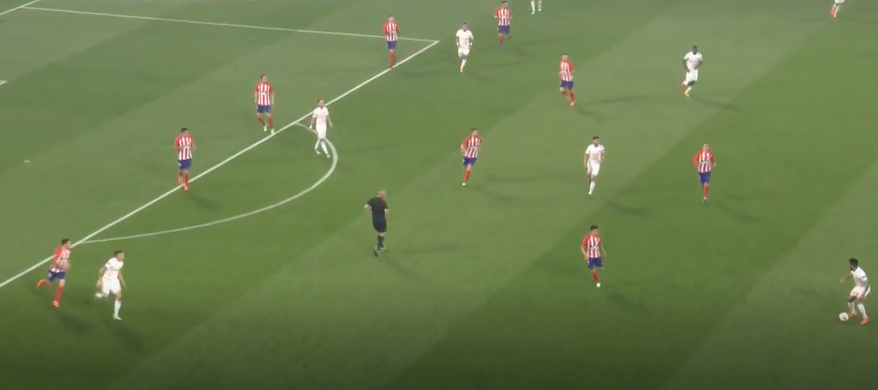By Philip Joe Cauchi
In this article we will analyse the back four of Atlético De Madrid within a 1-4-4-2 system of play. The examples of situations are taken from the Europa League final against Olympique De Marseille. Discipline and compactness as well as coordinated teamwork is key to refrain the opponents from having goal-scoring chances. It is imperative to point out that the back four does not work as an isolated unit. For the stability and success of the whole team, the level of communication between the back four and midfield four, and also between the midfield four and the front two should be high. The movements and positioning of the back line is directly related to the positioning of the ball, rest of the team in front of the ball and the opponents.
To keep this analysis simple yet informative we will focus on the back four and midfield units’ behaviour when the ball is in the middle third of the pitch from central and lateral positions. Highly noted was that when Marseille were in possession in the middle third, Atlético always had two lines of four and sometimes five players in midfield behind the line of the ball. In figure 1, we can notice how the ball-side full back Vrsaljko is close to the winger while the two central defenders Godin and Giménez remain centrally to outnumber the opposition’s striker. If the ball is played to the ball-side winger, Vrsaljko is able to immediately apply pressure to prevent the winger from turning and face the goal. At the same time he has enough space to track the winger and close him down if the latter decides to attack depth.

Figure 1 – Opponents with the ball in the central channel
It is also highly important to note in this situation that there is no immediate threat in the space behind Vrsaljko and Giménez. This situation enabled the full back to move closer to his direct opponent. If Marseille had a player in this space, an Atlético midfielder should have dropped to mark him. Furthermore, notice how an Atlético midfielder has dropped between the two lines of four, thus protecting the two central defenders as well as preventing Marseille from playing the ball between the lines.
In the case Atlético’s full back (in this case it is the left full back Lucas) applies pressure on the winger, as is shown in figure 2, the team’s lateral midfielder would help to double team, while the closest central midfielder covers the full back and closes the passing lanes towards the inside. The two central defenders Godin and Giménez remain central so to provide the team with balance and stability, and to have numerical superiority in central areas.

Figure 2 - Opponents with the ball on the flank zone
When the ball is in the central zone and Marseille have both width and depth, the back four remains solid with compact horizontal distances between all four players (figure 3). The midfield unit slides across according to the position of the ball with the aim of blocking vertical passes into dangerous zones.

Figure 3 - Compact back four with the midfield unit blocking vertical passes
Having a solid back line is critical to a team’s success. It provides the team with the stability and confidence they need when attacking. This requires a high degree of communication, tactical understanding, discipline and a strong work ethic where players play for each other.
Philip Joe Cauchi works as performance coach in Malta. He holds a UEFA A and a UEFA A Youth Elite coaching licences as well as a B.ed (Hons) in Education with Physical Education and is also a qualified football conditioning coach.


